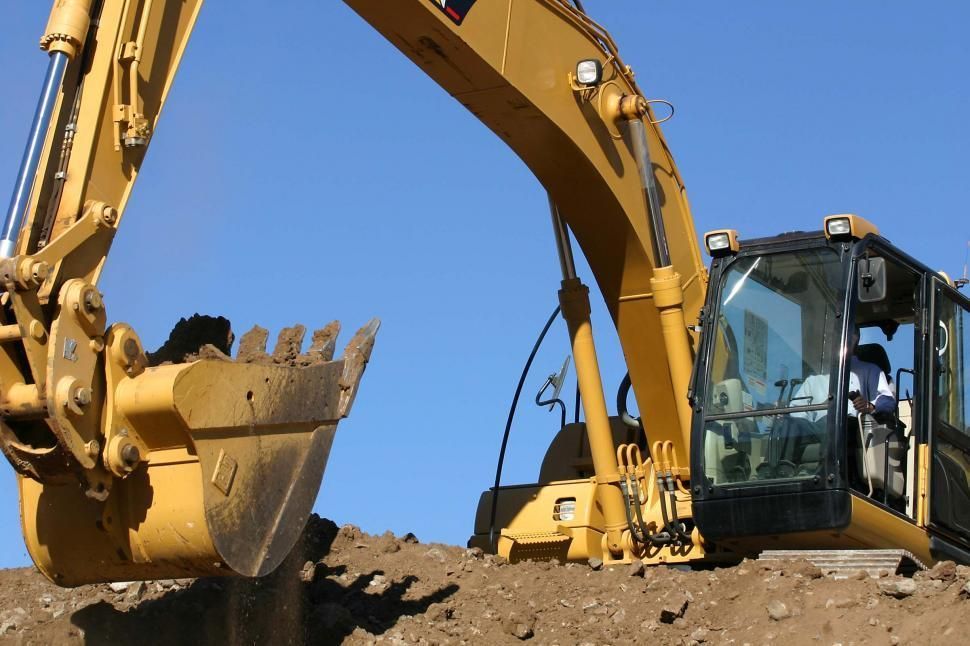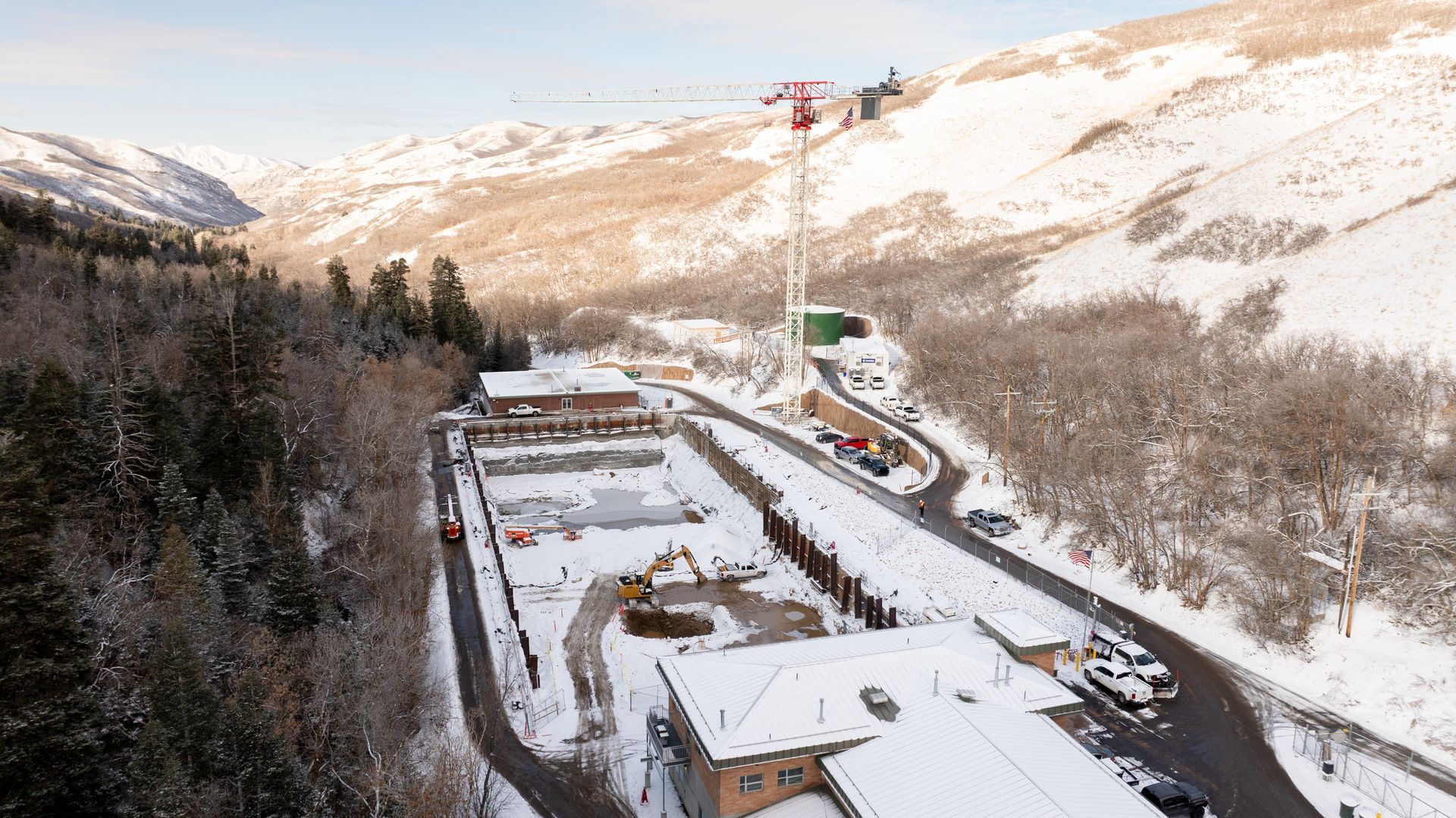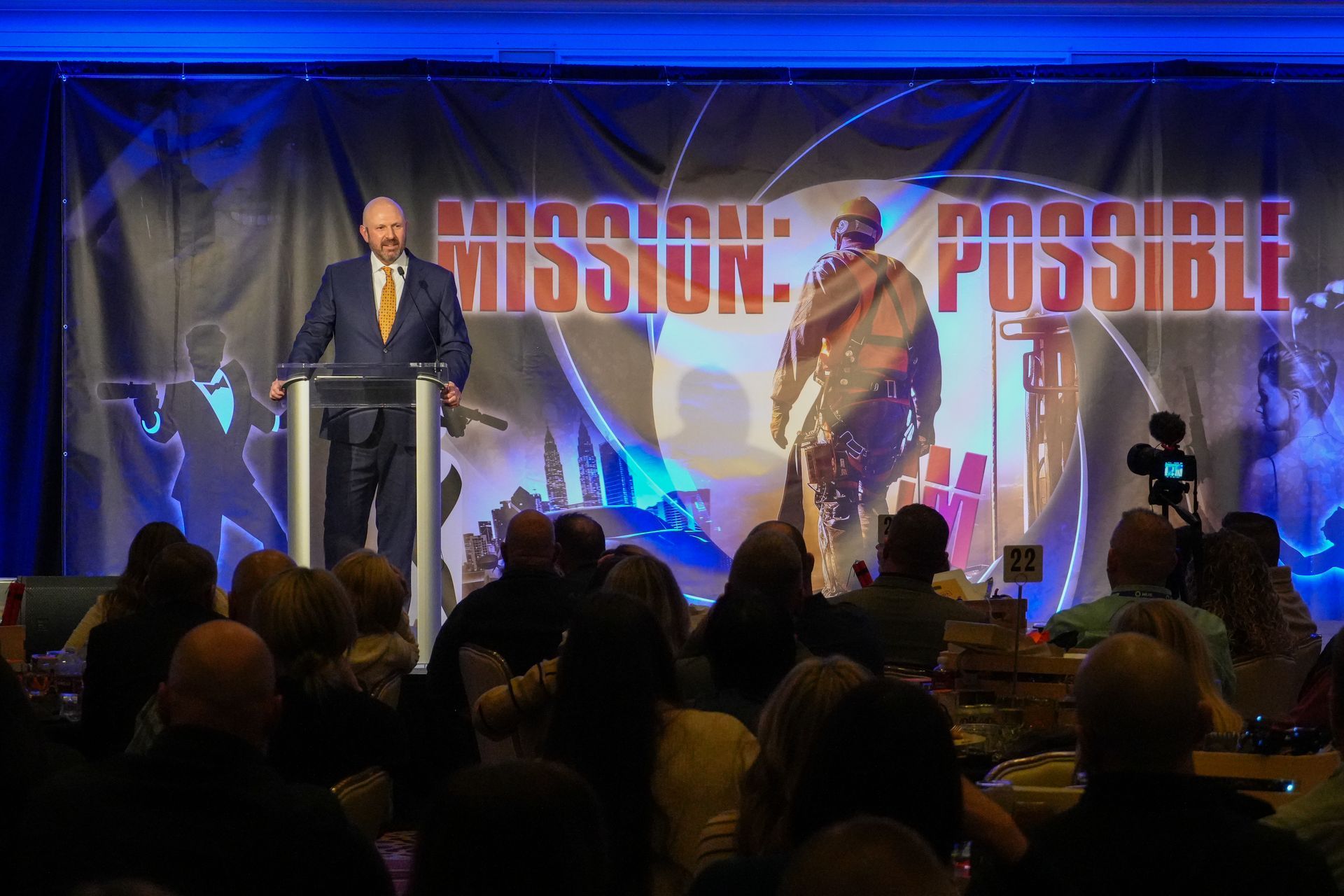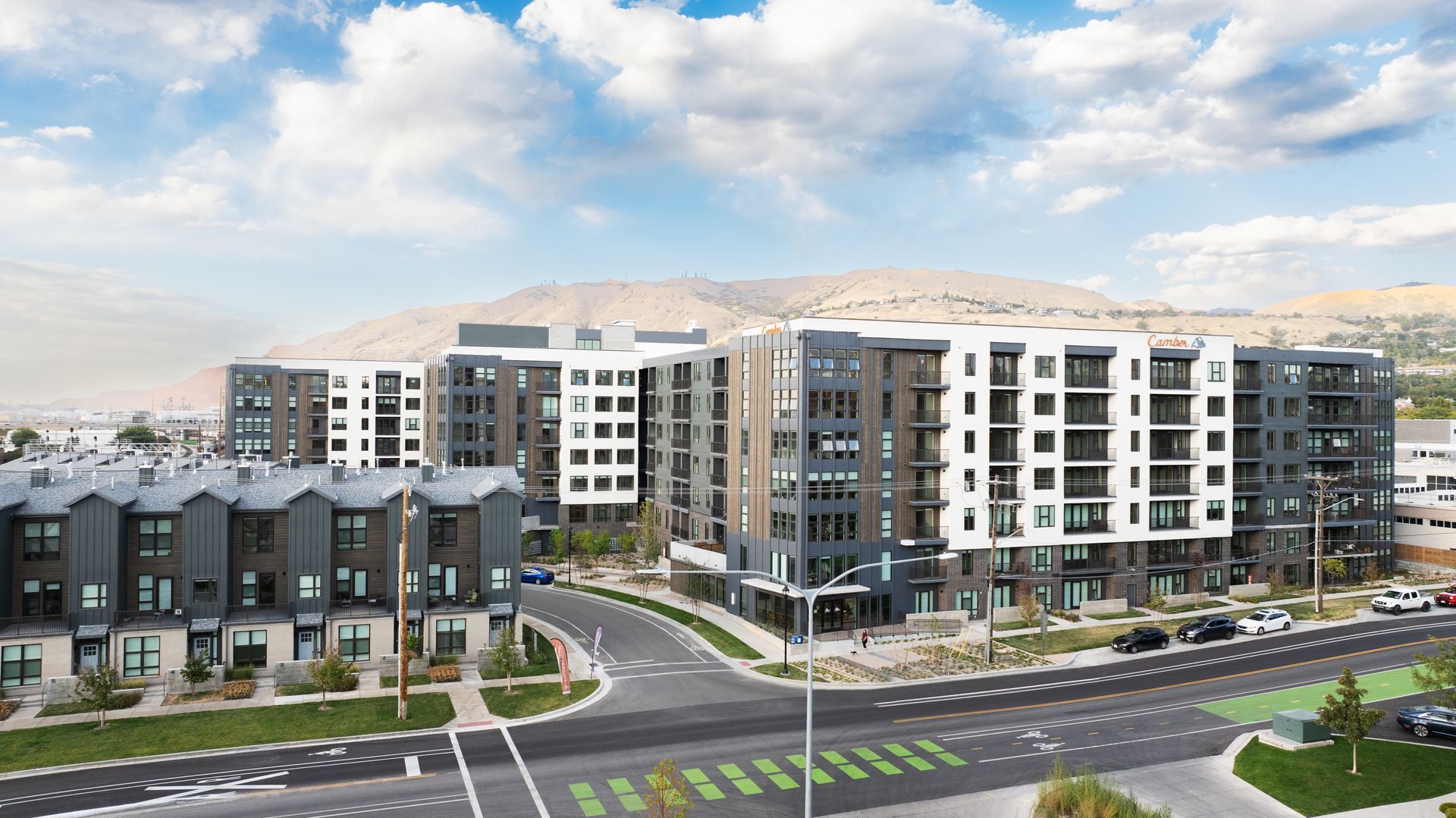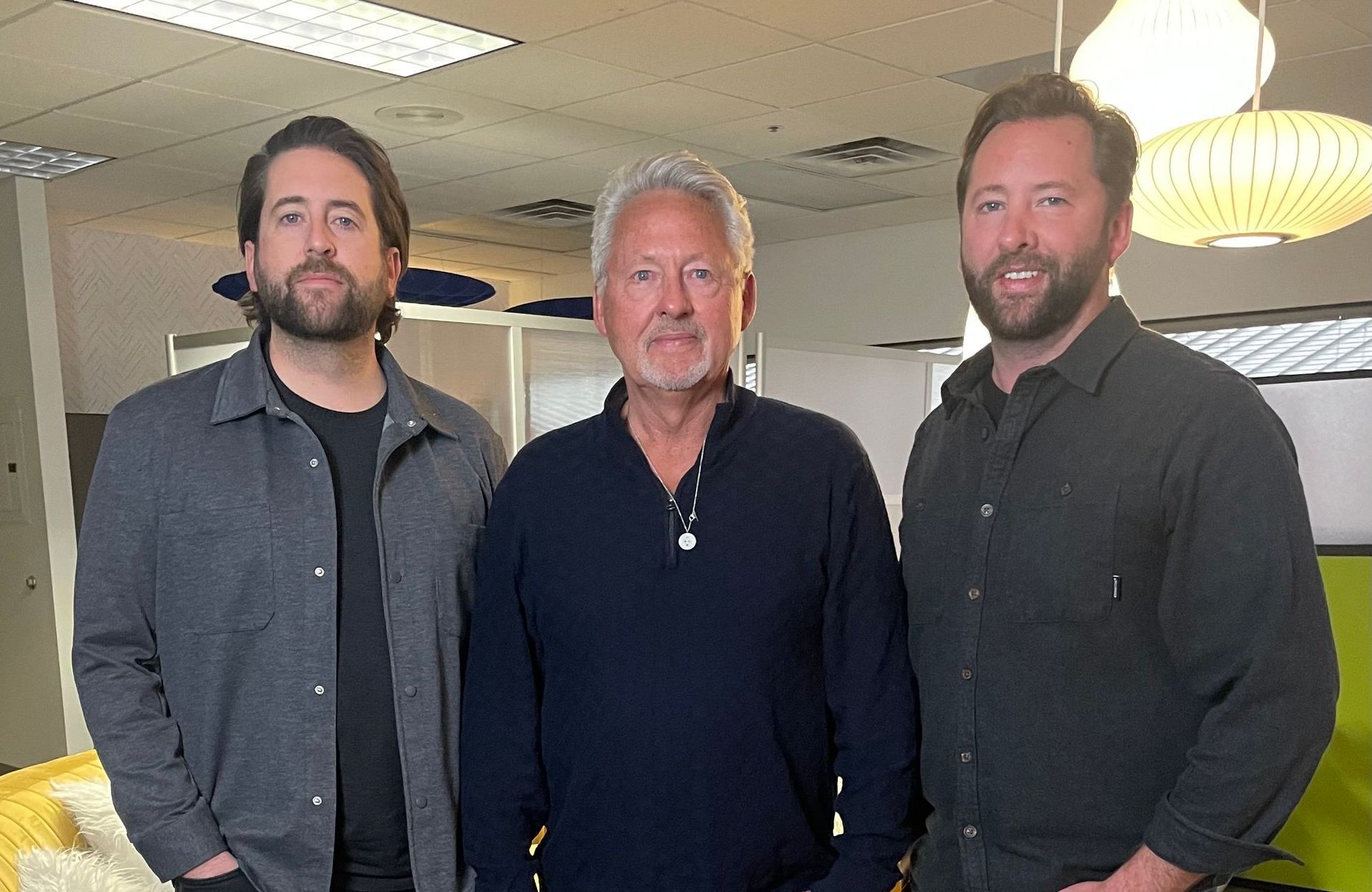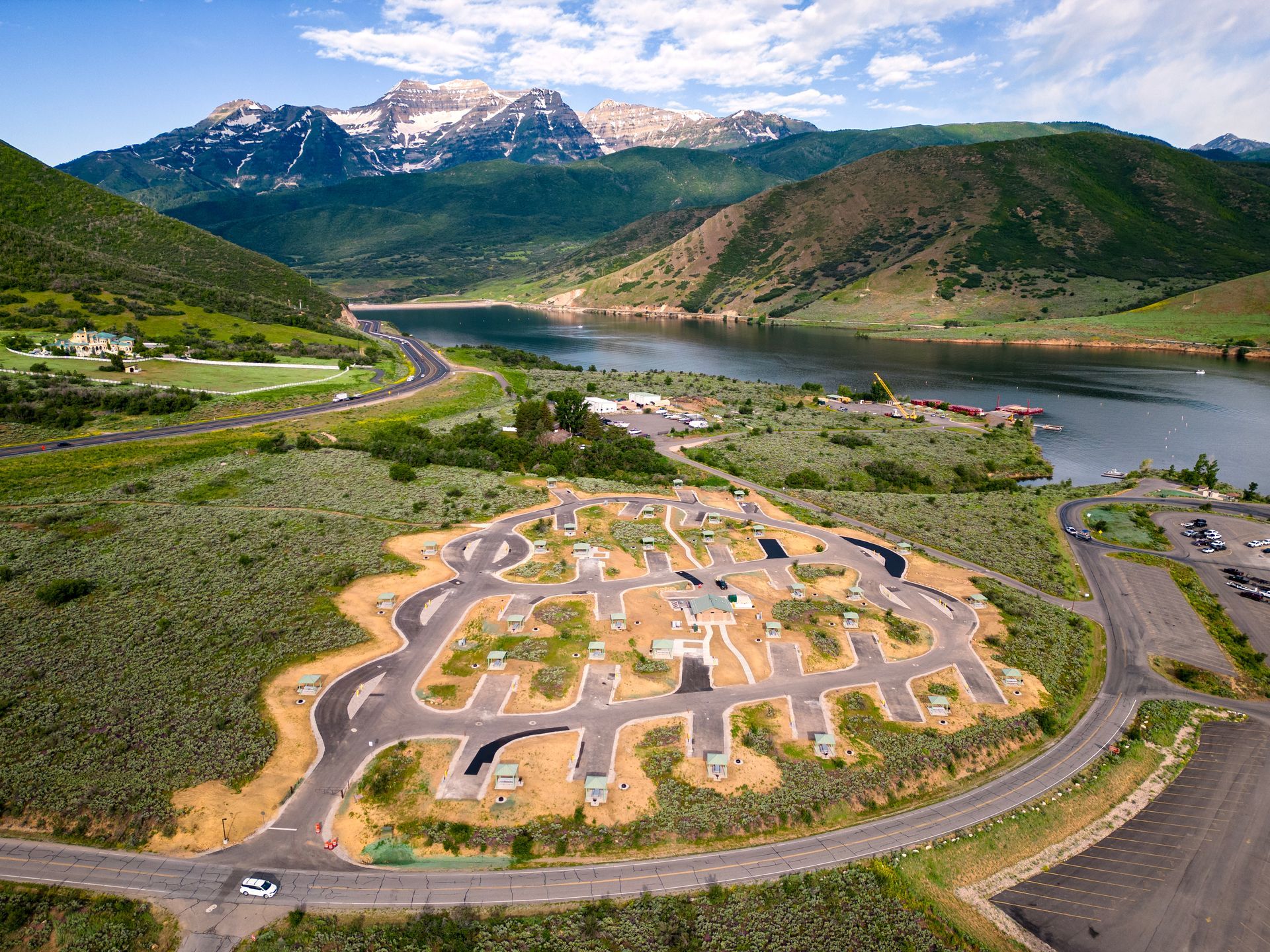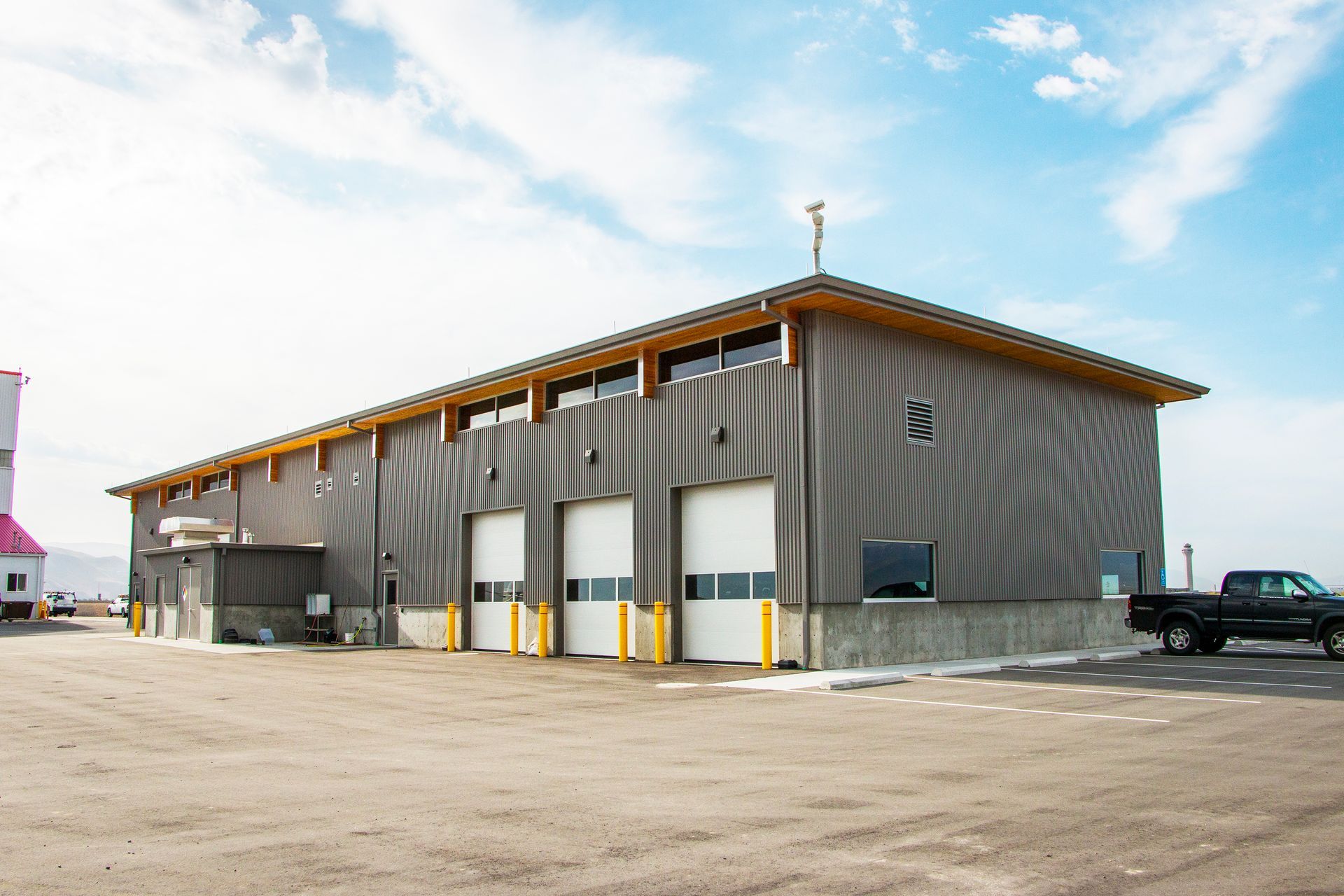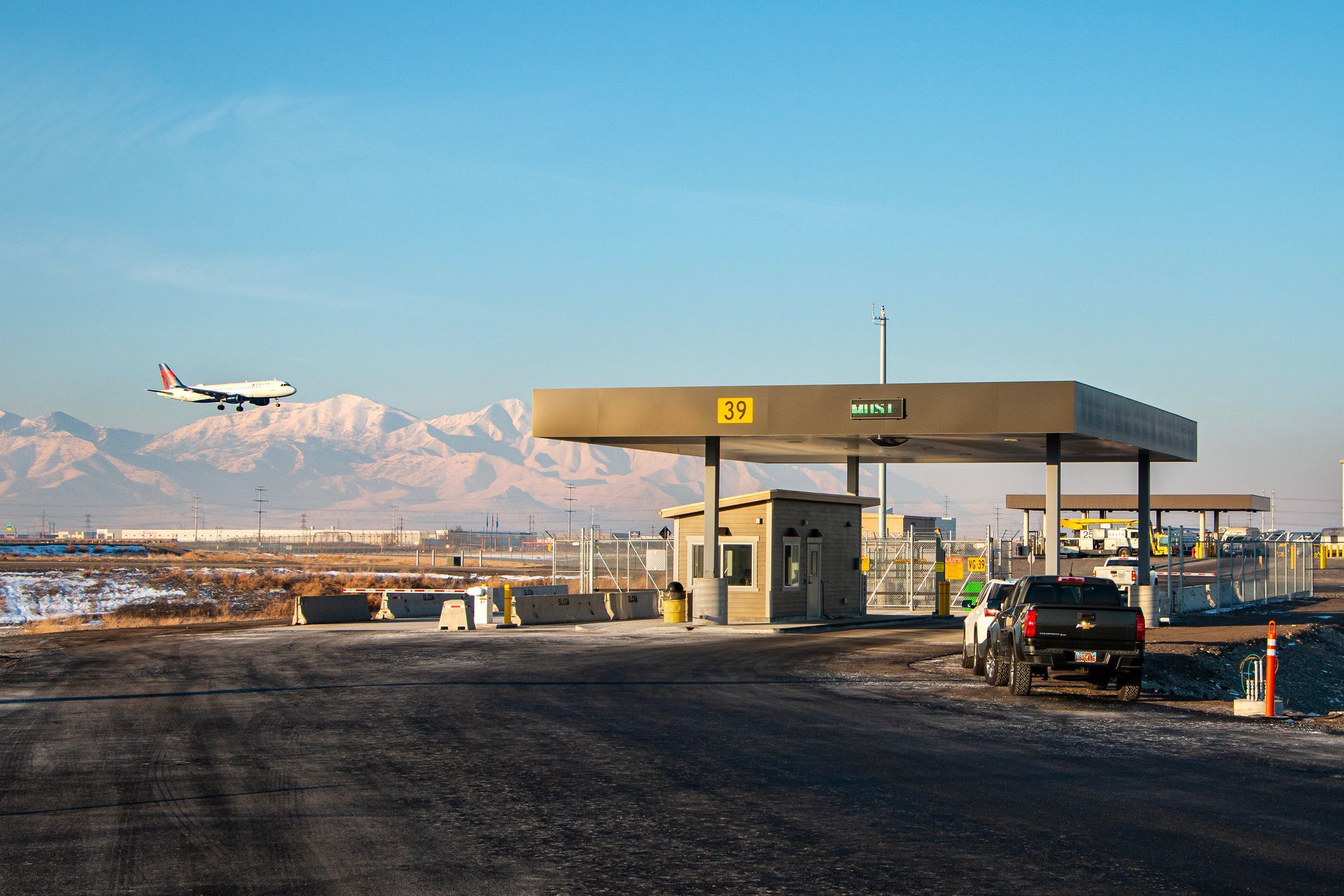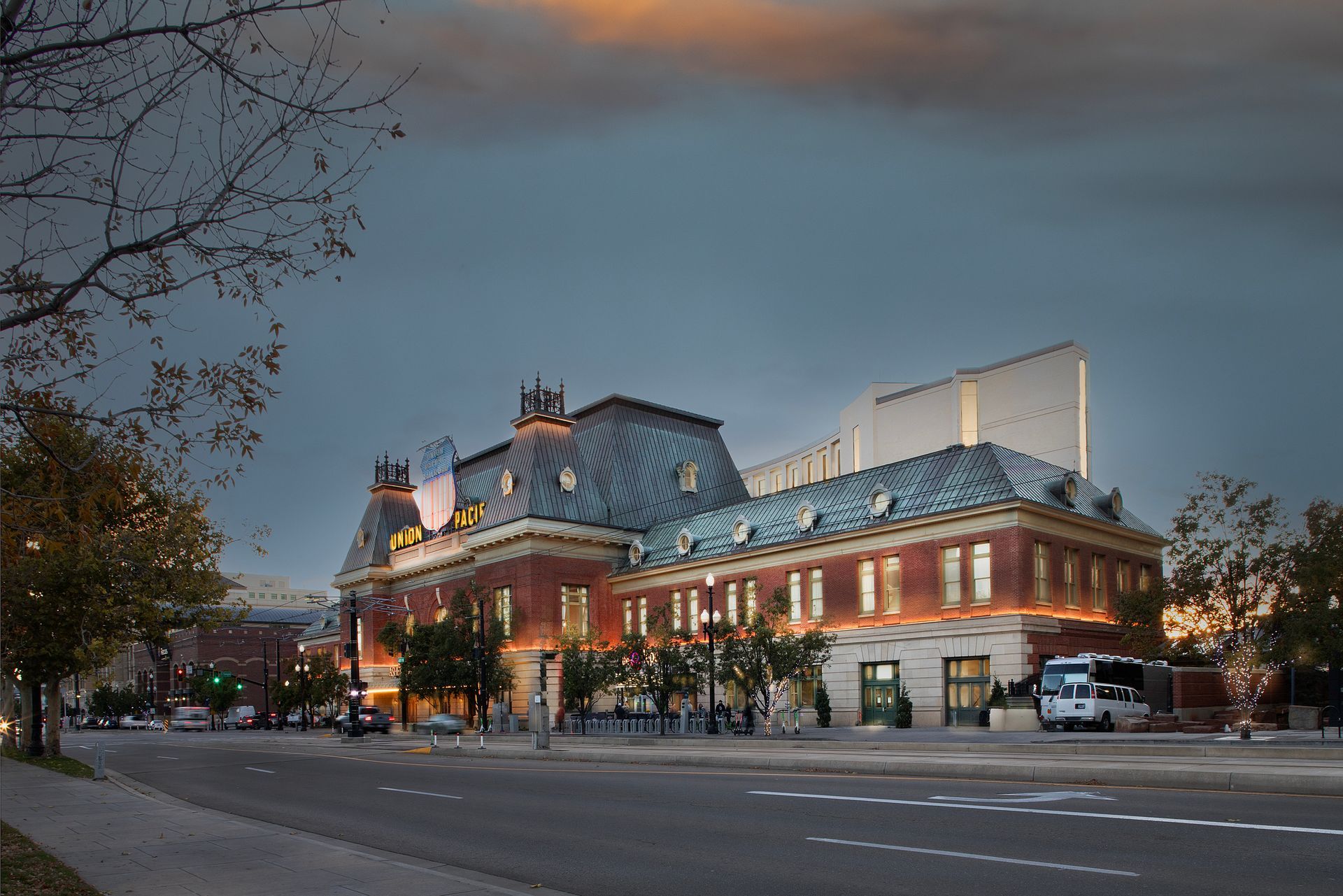Cal Wadsworth has resurrected his general contractor firm with the goal of eventually handing the reins over to his sons. By Brad Fullmer
Cal Wadsworth (center) is flanked by sons Chris (left) and Jordan at the firm’s office in Draper. Cal started his general building firm back up in 2020 after a decade doing other things, including becoming a renowned chef.
Lone Wolf
The second of seven sons born to Ralph and Peggy Wadsworth, Cal grew up working on the family farm, which later transitioned to working in construction when his father founded Draper-based heavy-highway general contractor Ralph L. Wadsworth (RLW) Construction in 1975. After several years working for the family business—and navigating a competitive environment that offered its fair share of friction, Cal decided he was ready for a fresh start and founded Cal Wadsworth Construction (CWC) in 1984, where he was able to display his jack-of-all-trades versatility as a contractor.
He initially started out as a subcontractor on RLW Construction projects before branching out as a general contractor specializing in small public projects that he could complete himself.
"I started out doing piece meal work (for Ralph); I'd give him a bid for painting at half price, so he started farming out miscellaneous jobs to me," Cal recalled. "I was making him money because I was cheap and figured as long as I'm making $10 an hour, I'm doing great. I started taking on more work from other sources and that was pivotal for me."
Cal hooked up with Dave Woodman, formerly of Assist Inc., and found ample work that was also fulfilling because of the people being helped. Assist Inc. was founded in Utah 1969 as an independent, non-profit Community Design Center that provides a host of services to people in need, including housing repair for low-income households and design-assist for people with disabilities.
"I became a framer, electrician, roofer—I was doing everything, a jack-of-all-trades," said Cal. "I know how to work with my hands for sure. I spent so many years with a toolbelt on, years of working alone. I became more of a social worker and began to spend more time with clients. A lot were widowed, impoverished. I'd get a call to put a door in and end up chatting for 90 minutes...they'd invite me to have lunch, tell the story of their life. Dave Woodman even encouraged [and appreciated] that. It gave me more work."
He also did various projects for nearly a decade for the Salt Lake Redevelopment Agency, mainly doing home improvement and T.I. work for SLC residents. One of his favorite projects was the Activity Barn at Wheeler Farm in 1990. Cal was also active in with the Associated General Contractors (AGC) of Utah, serving as Chairman in 2002. In 2003, Cal moved to Arizona, setting up shop in Cave Creek, a small city north of Phoenix. Over the next five years, work in the Grand Canyon State was plentiful and the firm thrived, particularly in the K-12 market, doing renovation and T.I. projects across the state for various school districts. Then came the recession beginning in 2008, and by 2010 he was forced to shut down all operations.
"Bad things happen to all people," he said, adding that it took him some time to figure out what to do next.
Contractor to Chef
Cal realized the need to switch gears—starting with a career change—and enrolled in culinary school at Le Cordon Bleu in Scottsdale. From 2010-2012 he worked for his brother, Guy Wadsworth (owner of Draper-based Wadsworth Brothers Construction), as a baker at Tuscany in Salt Lake, then opened The Ridge in Draper with his wife, Gaye, with financial backing from his brother, Tod Wadsworth (Vice President of Draper-based Ralph L. Wadsworth Construction). From 2012-2018, Cal was the primary chef, while Gaye ran the front of the house operations for the quaint restaurant.
"It sounds romantic," he quipped about the reality of working side-by-side, day-after-day, with your spouse, in a high-pressure, fast-moving environment. "It's not. I'm not the easiest guy to get along with sometimes."
Tod said Cal approached the job with utmost professionalism and with the same tenacity he does as a contractor.
"It's a different business altogether, where Cal was into perfection and meal presentation," said Tod. "He worked seven days a week for years and put his heart and soul into that business. I think it was a great opportunity for him to try something he always had a passion for and get it out of his system. He is one of the best chefs I know, one that truly puts the time and effort into his work, using the best ingredients and cutting no corners."
After six years, Cal was ready to get back to the construction world and returned to Ralph L. Wadsworth Construction as a Project Manager in 2018, a stint that lasted two years. He managed two notable projects during this time, including the Timpanogos Visitor's Center in American Fork Canyon and The Cliffs at Jordan Station, a $32 million, 220-unit project.
He ultimately left RLW and hooked up with Jeff Davis of Construction Management Consultants, working with him for a year and eventually getting CWC relaunched in March 2020, right as COVID-19 hit.
Recent projects include the Deer Creek Campground Improvements, and two projects at the Salt Lake International Airport: a new Glycol Plant and Gate 39. The firm also made significant improvements to Green River Campground. (Photos courtesy of Cal Wadsworth Construction)
Next Gen Up; Bringing Seasoned Talent Aboard
Growing up, Chris and Jordan had zero interest in following in their father's footsteps, but by the end of 2021, both found themselves in situations that were not viable long-term. The prospect of connecting with Cal on a professional level and learning the construction trade from him was enticing. Cal at that time was looking for help, but unsure if his sons had interest in joining him.
"Growing up, they wanted nothing to do with this business [...] so it was interesting they came to work for me after all these years and this late in their life," said Cal, with Chris (37) and Jordan (33) in their mid-30s. "I just called them out of the blue one day and asked 'Are you happy? I could sure use your help'."
In February of 2022, Chris left his job of eight years in business development for a drug testing company to join Cal. Jordan, who had been with Ralph L. Wadsworth Construction for three years as a project engineer and software specialist, followed in May.
"The opportunity to work in the family business and switch industries was appealing [...] take a leap of faith and jump in," said Chris.
"I had reached a point where I didn't want to pursue climbing the ladder where I was at," said Jordan. "Chris was already on board, which did help."
In addition to his title of President, Cal is the firm's lone estimator, which hearkens back to his early days of being a veritable one-man band and doing everything himself.
"I enjoy the bidding process, I enjoy estimating—it's a lonely endeavor," said Cal. "It's like studying for a test. You have to do that in solitude."
"Cal is relentless in his pursuit of doing things right," said Chris. "He doesn't accept mediocrity. He's scrappy when it comes to finding ways to maximize profits on jobs."
"He doesn't think roadblocks exist," added Jordan. "You find a way through, around, over it. When a door opens, you walk through it."
Chris works in operations and finance, while Jordan is a ProCore software expert and works in a project controls role. Both will be expected to learn business development and project management over the next 5-7 years before deciding on how best to transition ownership.
"It is great to see Cal continue the Wadsworth family's construction legacy by hopping back into the construction business with Chris and Jordan," said Kip Wadsworth, CEO of Draper-based Wadsworth Development Group. "This is a great move as working with family is very gratifying, provides a succession plan for Cal, and will carry on the Wadsworth's reputation for hard work, quality and integrity."
The firm has made solid strides in four years, with 50% annual growth three years running, and growing to 17 total employees, including the additions of industry veterans—Jordan Boyer, Cory Wadsworth (a cousin), Mike Carroll, and Trent Stronghorn. All four have 30+ years of construction experience and a passion for building quality projects.
The firm remains committed to working on smaller public projects—Cal's bread-and-butter for many years—and recent projects like the $3.5 million Deer Creek State Park Campground in Provo Canyon, an expansion of the Park and Wait Lot at the Salt Lake International Airport, two Amtrak Railroad stations in Southern Utah, and a $3.5 million park plaza project in the Marmalade District of SLC—a project which Chris described as a "very complicated, cool project" that underscores CWC's prowess in the public market. That said, Cal knows gaining traction in the private development market is essential for long-term prosperity for CWC.
"We've hired some talented people recently, which is a significant investment for us," said Cal. "We're trying to develop a private market segment so we're not just doing public procurement work. We hope this is a move in the right direction and allows us to do our job better and grow the company."
He continued, "We're more focused on building a team and sharpening our tools before we march into battle is one way to look at it. We're not on this instant crusade to achieve success as fast as possible. I'm more interested in slow, moderate growth, preserving a quality of life, and along the way mentoring and teaching other people. That's more my focus this time around... trying to help (Chris and Jordan) so they can run it without me. "I'm optimistic about the chance we have to succeed and grow the company."
Tod said the re-establishment of CWC offers lasting upside to Cal and his family.
"(The benefit) is two-fold; a way for him to continue the next chapter of CWC and a way for him to give back," he said. "There's something special about building projects for others, either private or public, that gives you the feeling and satisfaction of giving back, along with the ability to admire your work and share with your family for generations to come. Personally, I am proud of his efforts and the drive to overcome past failures or experiences and turn them into success stories, especially with his boys."
